Nakiyo Olive 3-Piece Chef Set
Nakiyo Olive 3-Piece Chef Set
In stock
Couldn't load pickup availability
Nakiyo Olive is our premier series of hybrid-style knives, combining Japanese AUS10 Damascus steel with European-style construction and a hexagonal, full-tang handle. Natural olivewood gives each piece its own unique character and comfortable feel.
The three-piece chef set includes the versatile 8" chef's knife for larger tasks, the paring knife for fine work, and either the serrated or plain utility knife for everything else. It comes with a complimentary magnetic bamboo knife stand our very own design, normally $39.90, as our gift to you. It stands freely on your counter and securely holds up to five knives with blades of up to 9.5". We offer it in two shades—pick your favorite!
Function
Function
90 mm (3.5") Paring Knife
The paring knife is best suited for paring fruits and produce due to its short, agile blade. The knife’s narrow point also makes it useful for tasks such as deveining shrimp, coring fruits, and precisely removing spots.
130 mm (5.1") Plain OR Serrated Utility Knife
This versatile, mid-sized knife is an excellent tool for most tasks too small for the gyuto. You can choose either a plain edge, best for chopping, paring, and carving, or a serrated edge, best for bread, citrus, and tough foods.
210 mm (8.3") Chef's Knife
Gyūtō (牛刀), meaning "beef knife," is the Japanese term for a French-pattern chef’s knife. Also known as the yo-boucho (洋包丁), “Western chef’s knife,” the gyuto was developed in Japan after the Meiji Restoration of 1868. This blade shape was originally designed to process large cuts of beef but is now the most popular general-purpose knife in the Western kitchen. In addition to slicing meat, the gyuto is also particularly suited for chopping produce near the heel and for making finer cuts with the narrow tip.
Blade
Blade
Nakiyo Olive blades are forged from 67-layer Damascus steel, which is made by repeatedly folding and forge welding two stainless steels with different carbon contents. The resulting material bears the elegant, wavelike pattern produced by its many fine layers—a testament to its strength, flexibility, and durability. This Damascus envelops a core of harder AUS10 cobalt alloy steel, a high-carbon stainless steel developed in Japan. Hardened to a Rockwell hardness of 60±2, it accommodates a long-lasting, razor-sharp edge. AUS10 is produced by Aichi Steel corporation in Tokai, Japan, and is functionally comparable to VG-10.
Damascus steel was first developed in India over 2,000 years ago and quickly established a reputation not only for its beauty, but also as one of the greatest metallurgical innovations in history. Swords forged in Persia and sold in the Syrian city of Damascus inspired legends of their ability to slice through a gun barrel or part a hair falling across the blade. Although the ancient technique was lost to history around 1900, modern metallurgists have succeeded in reproducing the effect with state-of-the-art alloys to bring performance to the next level.
Handle
Handle
Nakiyo Olive handles are made from natural olivewood, bookended by a ferrule and endcap of stainless steel and accented by a red G-10 spacer and mosaic pin. It encloses a hidden full tang that gives the knife a balance akin to that of a German knife. The innovative hexagonal handle shape is perfect for both right- and left-handed users and features soft ridges that ensure a solid but comfortable grip.
Specifications
Specifications
Length
Chef: 210 mm (8.3") blade, 345 mm (13.6") overall
Utility: 130 mm (5.1") blade, 250 mm (9.8") overall
Paring: 90 mm (3.5") blade, 210 mm (8.3") overall
Weight
Chef: 220 g (7.8 oz)
Utility: 100 g (3.5 oz)
Paring: 90 g (3.2 oz)
Blade Material
67-layer Damascus with AUS10 cobalt alloy core
Edge
Double bevel
Handle Material
Olivewood with steel ferrule and end cap, red G-10 spacer, and mosaic insert
Handle Shape
Hexagonal, rounded
Care & Maintenance
Care & Maintenance
Wash your knife by hand with warm water, soap, and a soft sponge or dish towel. Avoid prolonged exposure to heat or moisture. Remember—there's no such thing as a dishwasher-safe knife!
To prevent edge chips, avoid impacts with hard surfaces. Don't chop bones, shells, or frozen food, and cut only on a wood or bamboo cutting board. Don't leave your knife where the edge might come in contact with something hard, such as in a sink or a drawer with other knives.
Store your knife so that the edge is protected from abrasion and impact. We recommend a magnetic stand, but you can also use a knife block with horizontal slots. If you must keep it in a drawer, use an edge protector. See our storage options here.
Sharpening
Sharpening
Sharpen on a whetstone at an angle of 15° per side and finish at a grit of at least 1000, but preferably 3000 or higher. Pull-through and electric sharpeners should be avoided for Japanese knives.
Alternatively, you can have your knives sharpened professionally. Seattle Cutlery offers a state-of-the-art, mail-in sharpening service for our own customers, but other services may be available to you locally.
Honing steels are not necessary to maintain Japanese knives. You can optionally touch up the edge with a high-grit sharpening stone or a ceramic sharpening rod.
Warranty
Warranty
All Nakiyo, Tojiro, Sabatier, and SeaCut products sold by Seattle Cutlery are covered by our lifetime warranty against defects in materials and workmanship. If you follow our care and maintenance advice and your knife ever fails during honest use, we will gladly repair or replace it. Our warranty does not cover regular wear and tear or damage due to misuse, but we may still be able to help in some cases.
Returns
Returns
Any item in original, unused condition may be returned within 30 days for any reason. Read our full refund policy here.
Share
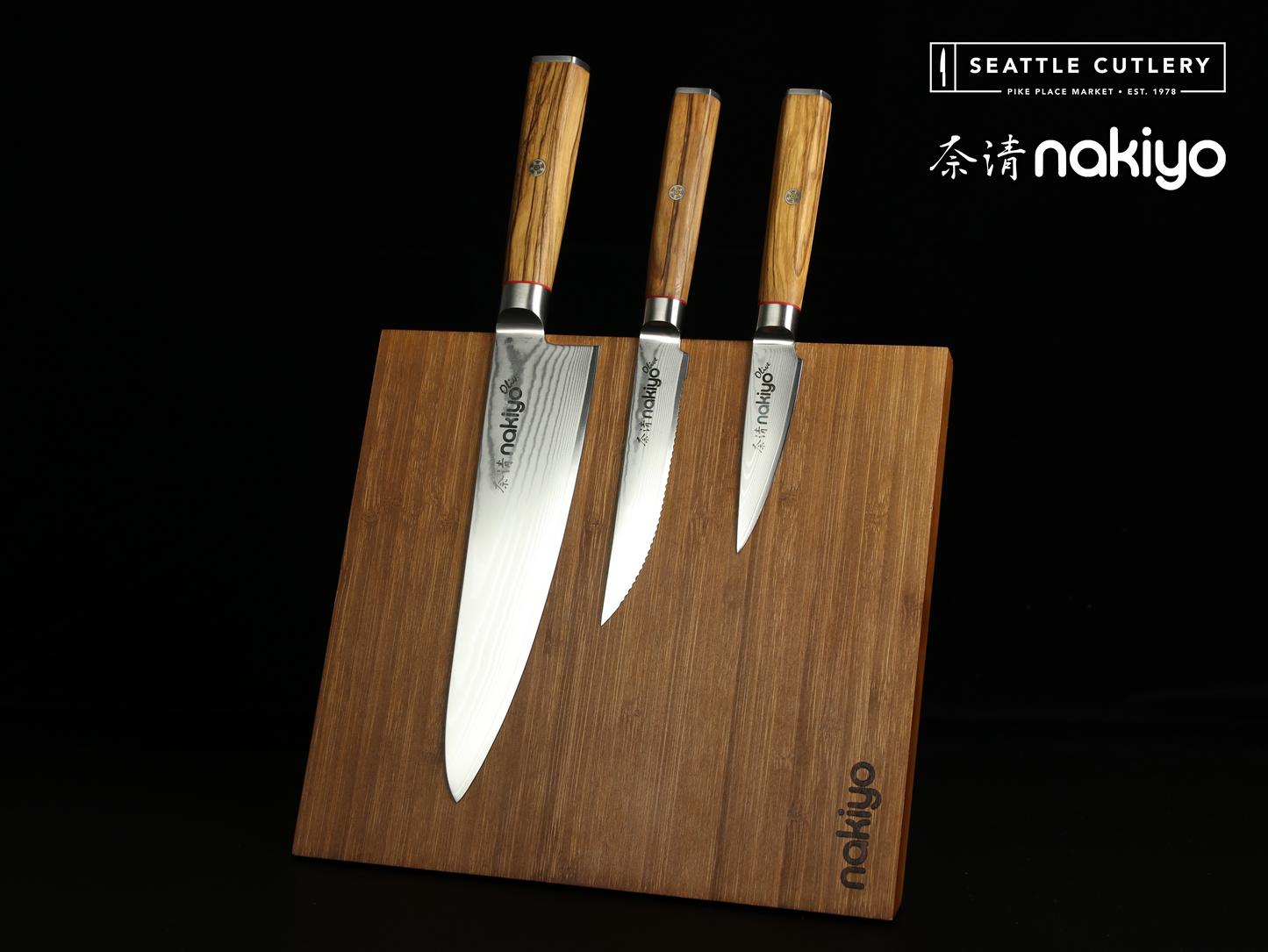
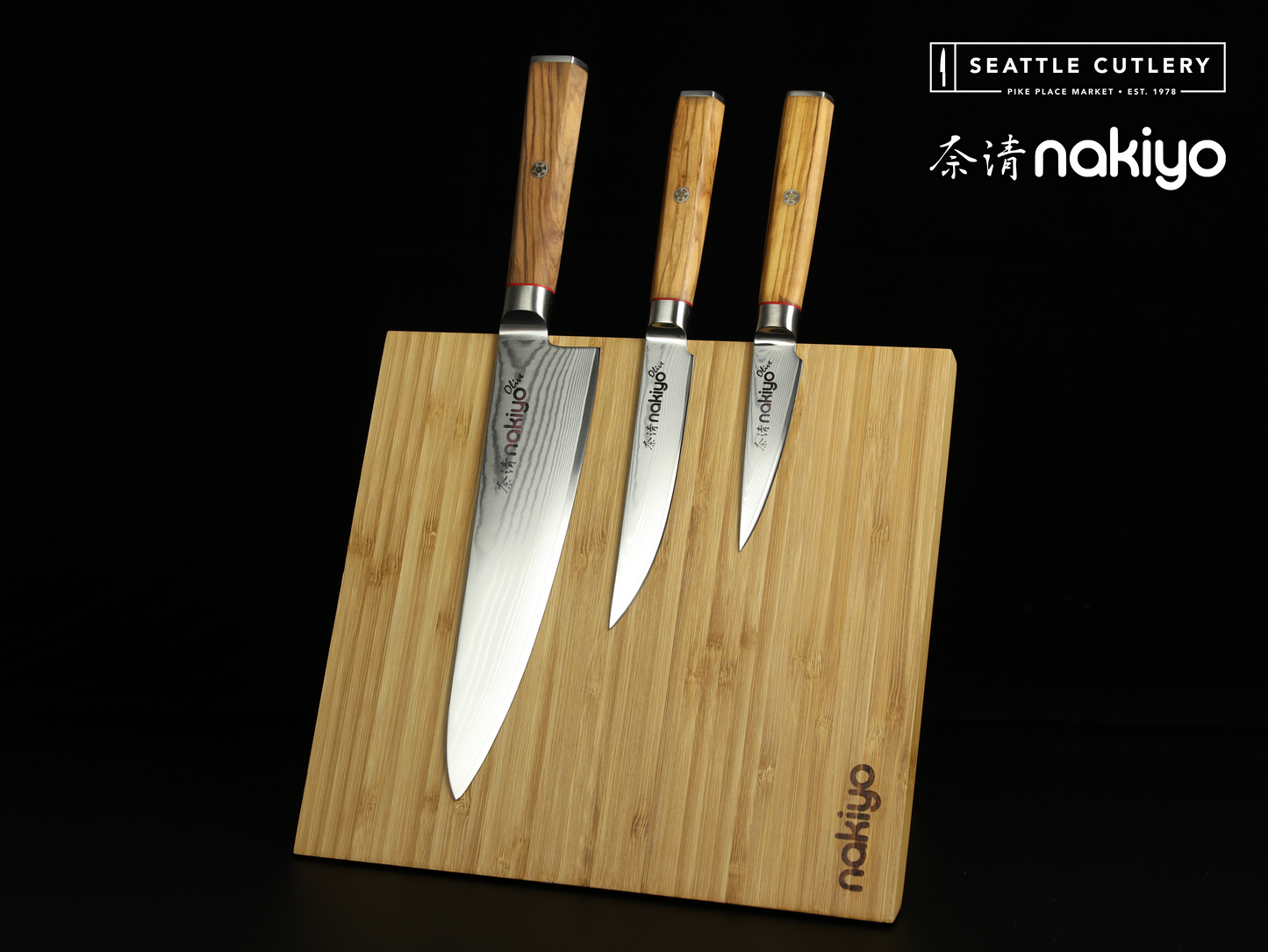
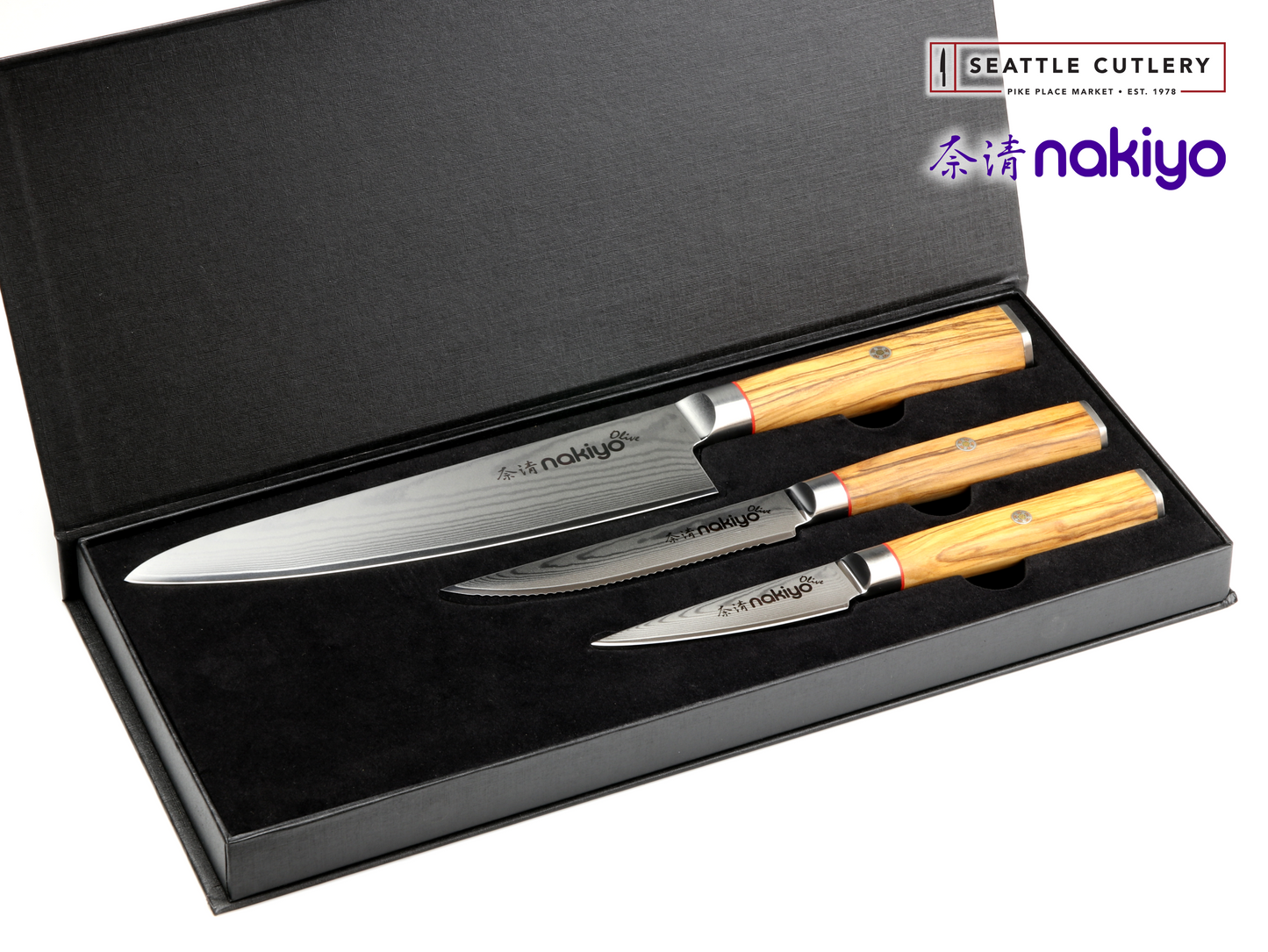
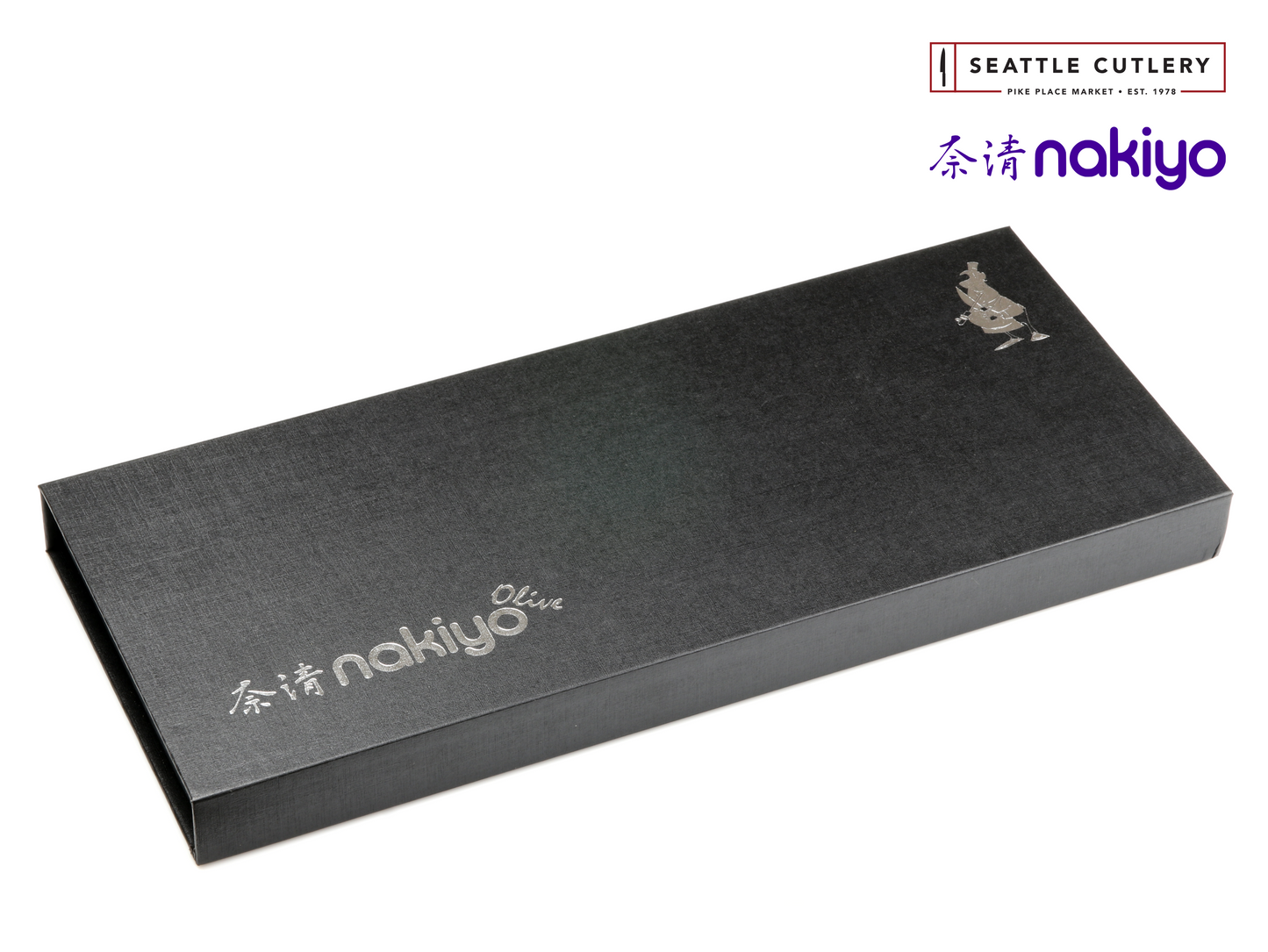
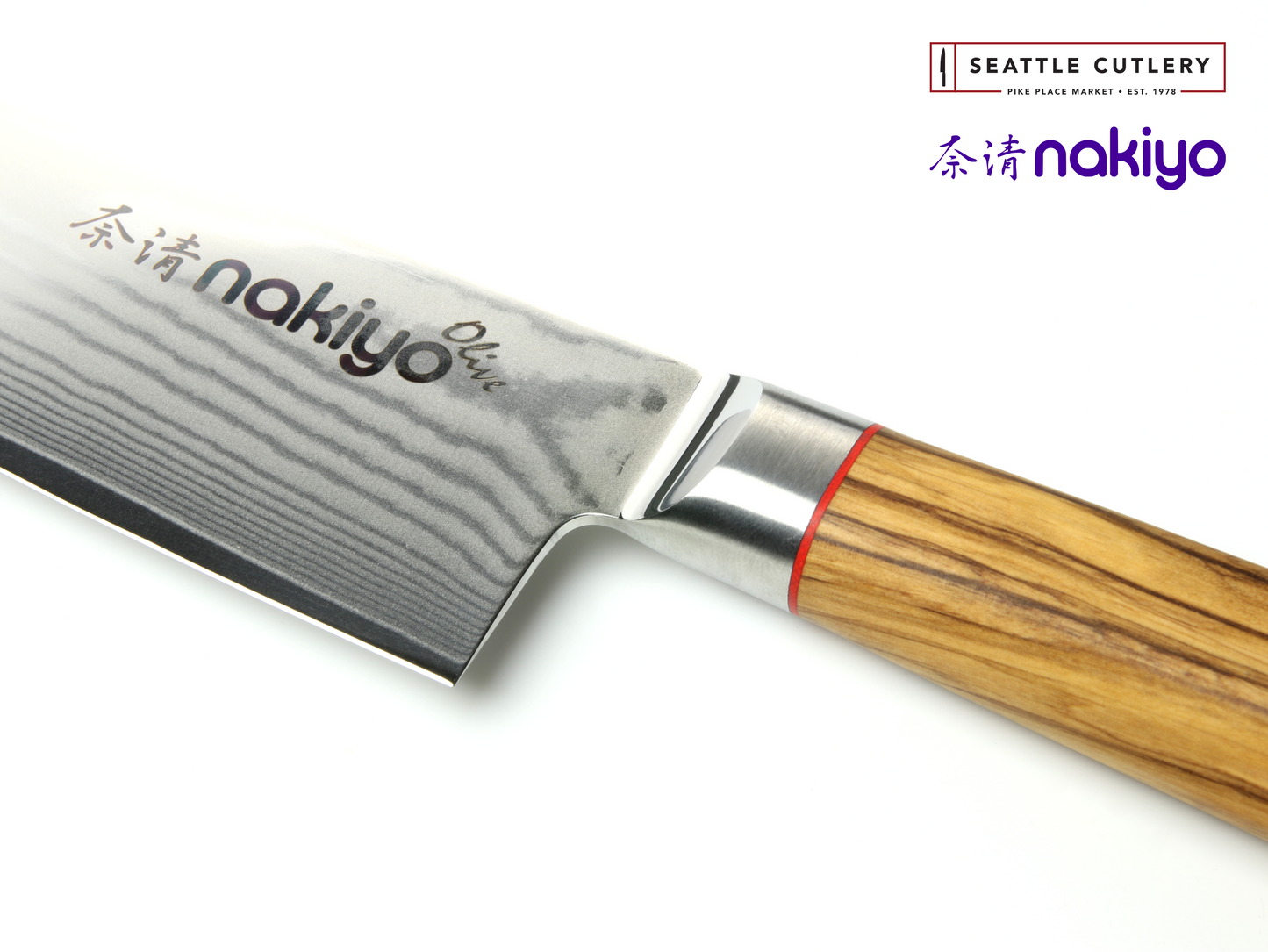
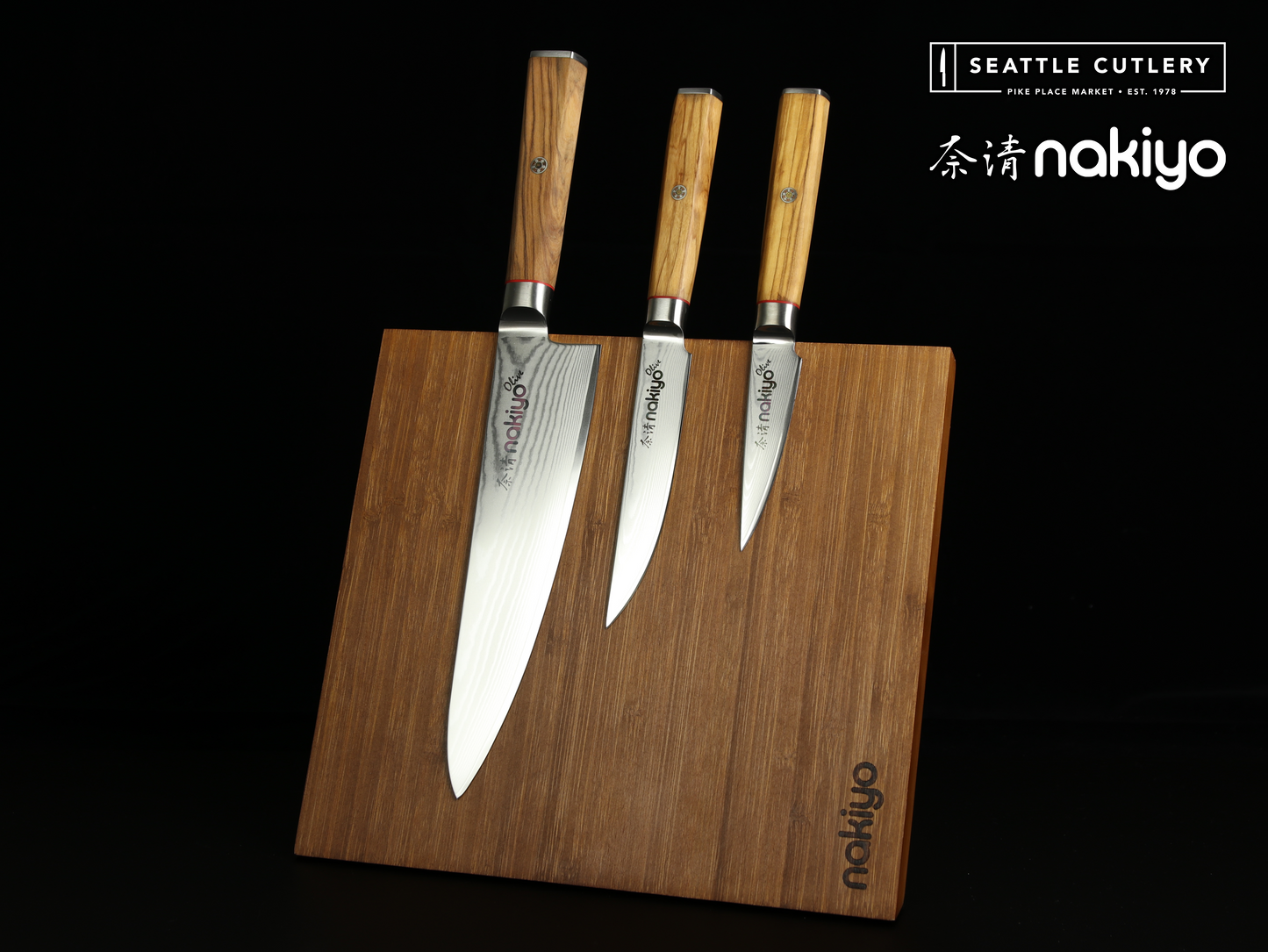
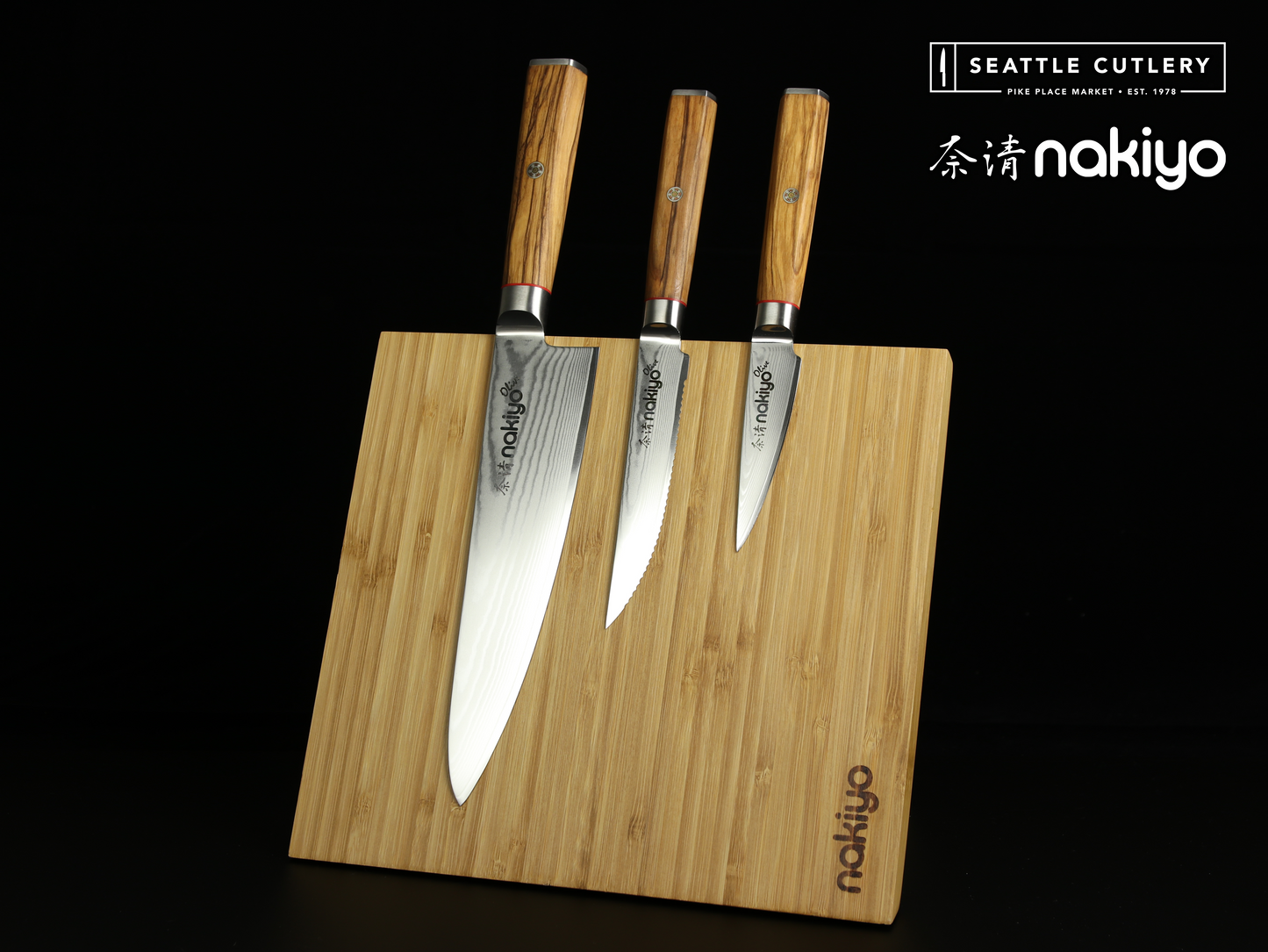
I always wanted a set of Nakiyo knives; my daughter has a set and I love using them. However, I am too cheap to spend this amount of money on myself. Whilst in Seattle, my husband saw me drooling over all the beautiful knives in your store and purchased a set for me. What was the tipping point for making the sale? The friendly blonde haired lady who welcomed us into the store and took her time to show us the various knives and the knives functions. Other shops might say “hello”, but your shop made us feel welcomed and our partronage appreciated.
Not only do they cut perfectly and are extremely well made, they are also beautiful! I've seen a lot of Japanese style knives that cut well but didn't look nice as a show piece for my kitchen. These have the best of both worlds. The customer service was amazing as well. I had them shipped and one of the knives came wrong. Reed immediately sent me a replacement and I had it within a few days. They didn't expect me to return the wrong one first. He made it right first and then had me return the wrong one. Amazing service! The set looks beautiful in my kitchen.
Outstanding product, sharp precise, looks great, feels great in the hand, will purchase more for my family…







